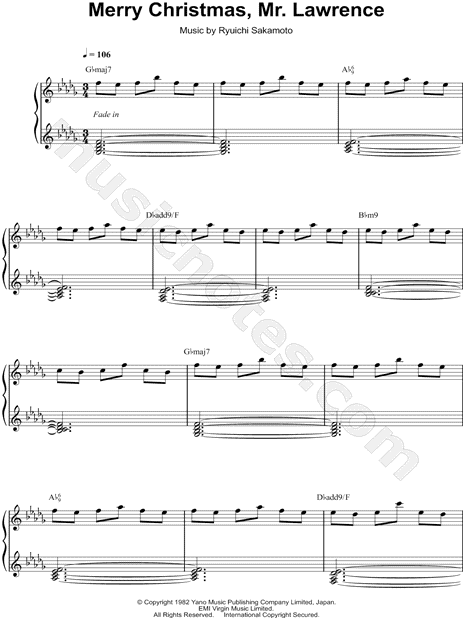

Ryuichi sakamoto merry christmas series#
While primarily focused on the piano and synthesizer, this series of albums included collaborations with artists such as Sylvian, David Byrne, Thomas Dolby, Nam June Paik and Iggy Pop. Sakamoto released a number of solo albums during the 1980s. In addition to acting in the film, Sakamoto also composed the film’s musical score and again collaborated with Sylvian on the film’s main theme (“Forbidden Colours”) – which became a minor hit. In 1983, Sakamoto starred alongside David Bowie in director Nagisa Oshima’s Merry Christmas Mr. Sakamoto’s use of squelching bounce sounds and mechanical beats was later incorporated in early electro and hip hop music productions, such as “Message II (Survival)” (1982), by Melle Mel and Duke Bootee “Magic’s Wand” (1982), by Whodini and Thomas Dolby Twilight 22’s “Electric Kingdom” (1983) and Kurt Mantronik’s Mantronix: The Album (1985). Sakamoto released his first solo album Thousand Knives of Ryūichi Sakamoto in mid-1978 with the help of Hideki Matsutake-Hosono also contributed to the song “Thousand Knives.” In 1980, Sakamoto released the solo album B-2 Unit, which is known for the electronic song “Riot in Lagos.” Also in 1980, Sakamoto released the single “War Head/Lexington Queen”, an experimental synthpop and electro record. After working as a session musician with Haruomi Hosono and Yukihiro Takahashi in 1977, the trio formed the internationally successful electronic music band Yellow Magic Orchestra (YMO) in 1978. In 1975, Sakamoto collaborated with percussionist Tsuchitori Toshiyuki to release Disappointment-Hateruma.

One of Sakamoto’s classical influences was Claude Debussy. He was also trained in classical music and began experimenting with the electronic music equipment available at the university, including synthesizers such as the Buchla, Moog, and ARP. He studied ethnomusicology there with the intention of becoming a researcher in the field, due to his interest in various world music traditions, particularly the Japanese (especially Okinawan), Indian and African musical traditions.

with special emphasis on both electronic and ethnic music. Born on January 17, 1952, Sakamoto entered the Tokyo National University of Fine Arts and Music in 1970, earning a B.A. January 17, 1952) is a Japanese musician, composer, record producer, pianist, activist, writer, actor and dancer, based in Tokyo and New York, who began his career while at university in the 1970s, as a session musician, producer, and arranger and whose first major success came in 1978 as co-founder of the electronic music trio Yellow Magic Orchestra (YMO).


 0 kommentar(er)
0 kommentar(er)
